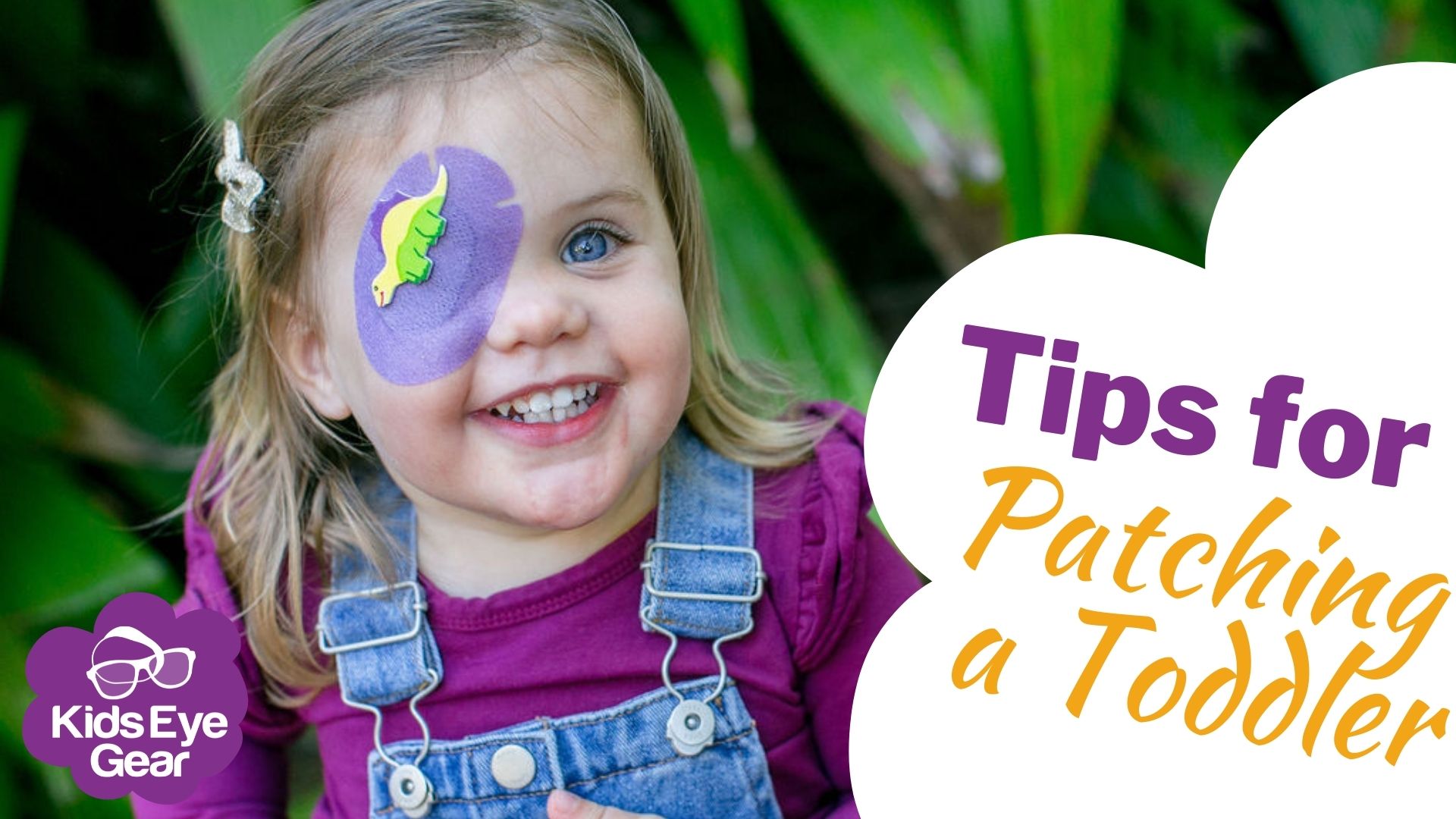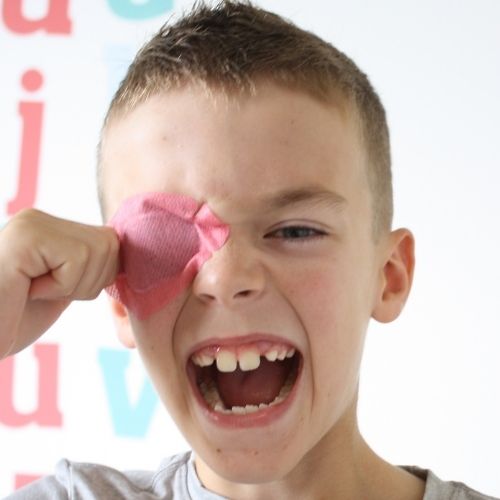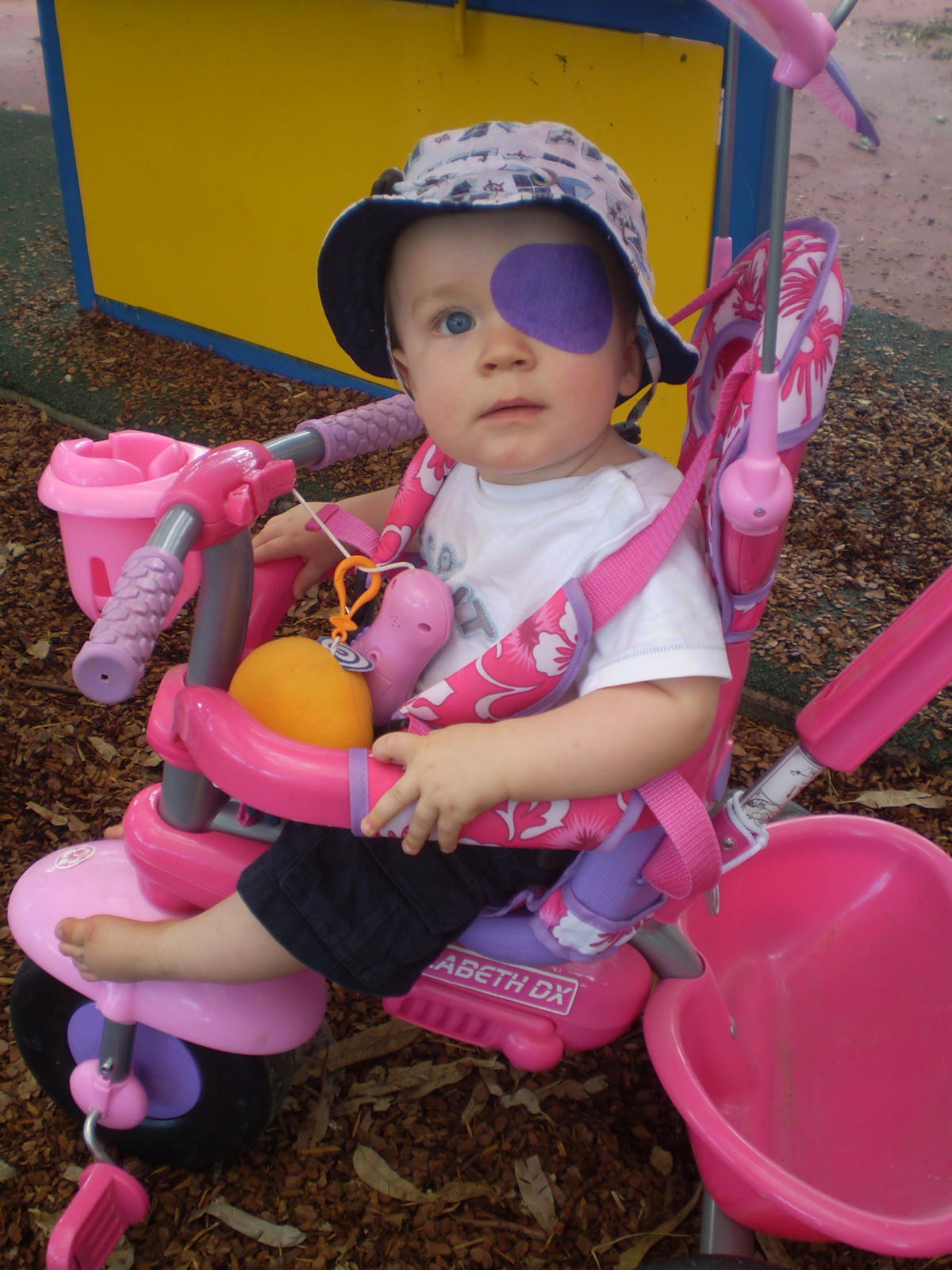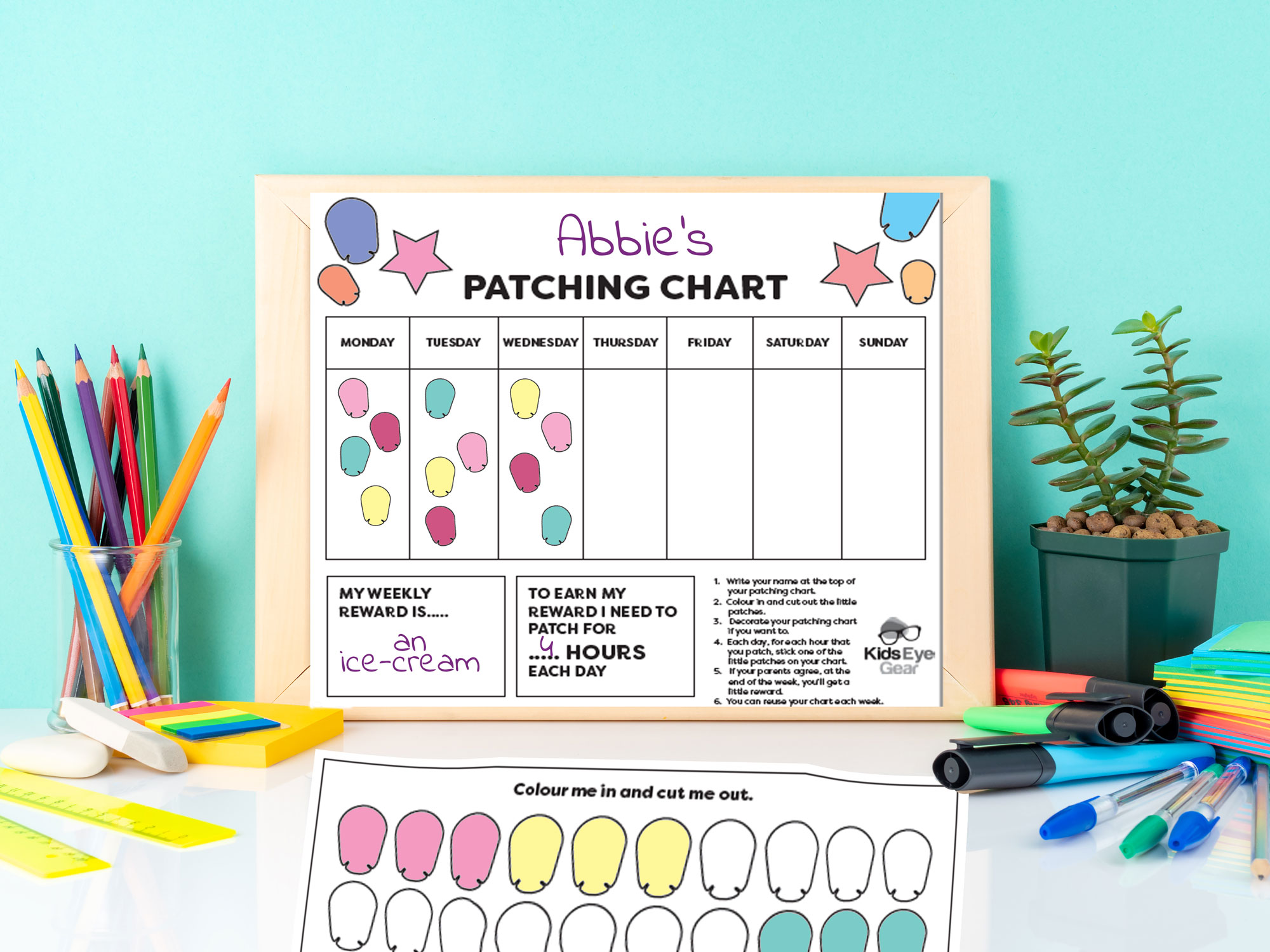Tips for patching a toddler
4th Nov 2021

Tips to get toddlers to patch
“My toddler won’t keep their eye patch on – help!”
“Can anyone help me with tips for patching my toddler?”
Taming a toddler can be challenging enough, without putting patching into the mix.
We started our son Dane’s patching when he was 7 months old but continued until he was 5 – so there was plenty of patching done through the toddler years! I’ll be honest and say we were fortunate that Dane was really good about patching most of the time but I think a lot of that came down to the expectations, routine and consistency that we had established from day one. If you’re just starting out patching your child when they’re a toddler, it can be a very different story. Tantrums, screaming, refusal to wear the patch are not uncommon. We all want the best for our kids and that includes helping them get the best vision outcome they can. Keeping to the prescribed patching routine set by our doctors is important to achieve that.
So after five years of patching, and eight years of helping customers with their own patching journeys, here are my top tips for patching a toddler.
1. Find a patch that works for you
Fortunately for parents there are now quite a lot of options when it comes to patches, this certainly wasn’t the case when we started patching, which is why we started Kids Eye Gear! But we went through three brands before we found the perfect patch for our baby. Sometimes this can be a bit of trial and error because every child’s skin is different and will tolerate different patches.
When it comes to the type of patch, you basically have two options – adhesive or fabric. Adhesive patches stick like a Band-Aid to the skin, while fabric patches typically go onto glasses, although there are a few that operate like a ‘pirate patch’ on a band.
By toddler age, there’s a chance your little one might be wearing glasses, so a fabric patch could be an option. If they don’t wear glasses and your doctor gives the okay for a fabric patch, you can buy a pair of cheap sunglasses and pop the lenses out – then put the patch on the sunglasses.
2. Loosen the adhesive before applying
If you’re new to patching your child’s skin can be super sensitive so it’s not unusual for adhesive patches to cause a bit of irritation in the beginning – or even ongoing – if you don’t find the right patch for you kid. An easy solution is to stick the patch to your skin or clothing before applying it to your child’s skin. This helps to break down the adhesive so it’s not as sticky.

3. Don’t just rip the patch off
Ripping an adhesive patch off can cause a great deal of irritation to sensitive skin. The best way to remove a patch is to rub either water, olive oil, coconut oil or adhesive removal wipes around the adhesive, allow to sit for a few minutes and then it should just slide right off.
4. Routine, routine, routine
Now that you’ve found a patch that works for you, it’s time to get down to business with getting your patching hours in. A great way to do this is to establish a routine. They might be toddlers but they will quickly work out what is happening if patching is done regularly and at the same time of the day each day. Many parents find that patching in the morning is the best way to keep the patch on, because I’m sure we can all agree that most kids are happiest at the beginning of the day and deteriorate into the afternoon as they get more tired. Avoid the ‘witching hour’ at all costs! It’s hard enough getting through that without having to deal with patching as well!

5. Distract, distract, distract
Keeping your child busy while they patch can keep them distracted from the fact that they have one eye covered. Head to the park, go for a walk, have a bunch of toys and activities that are only available when it’s patching time, keep the iPad exclusively for use while patching, get out the finger paints. Basically whatever is going to keep them occupied and not thinking about the patch will help.
There’s a bit of debate about whether kids should patch while they’re at daycare or kindy but we always found it very beneficial. There’s so much going on while they’re in care that they’re easily distracted and patching time flies by.
6. Keep putting them on
My daughter’s favourite word when she was a toddler was ‘no’ (not much has changed if I’m honest). Young children naturally want to test boundaries and they’ll likely give you a lot of push back when it comes to patching. Being consistent and persistent in reapplying the patch is absolutely imperative here. It might break your heart that they cry or scream when the patch goes on but remember that you’re doing this for their future – so they can have the best vision possible. Just keep putting the patch on and be firm about it.

7. Set a timer
If a child understands that the patching is for a finite time – and not necessarily ALL DAY – they can often be more compliant. So set a timer on your phone that they can see countdown, have a toy clock that shows the time or clock hands of when they can finish patching, have a sand timer so they can see the time disappearing. Time is an abstract thing when you’re little so showing them visually how they’re going can be really helpful.
8. Share the load
It can be mentally, emotionally and physically exhausting to care for a toddler – let alone a toddler that needs to patch! If you have help around you, don’t be afraid to ask for it! Even if you have a grandparent, cousin, kid next door that you can ask to spend 30 minutes or an hour entertaining your little patcher, this can give you a much-needed break and help to get your patching hours in.

9. Reward Charts might help
At this age, kids are old enough to understand reward charts or incentives for their patching time. If they patch for an hour they might get a lolly, or if they fill out a whole week’s worth of patching they might get a new book or a trip to the shops for a babycino. Just like the timer philosophy, reward charts can help the child visualise their success.
10. Shake it off
If you have a bad patching day, and let’s face it, you will. Sorry! But when you do, just get through the day, shake it off, and start fresh the next morning. Just like us adults, kids can have bad days too and patching will just be too much for them. Get whatever hours you can in and then write the day off and aim for a little more time the next day.
Patching a toddler can be an absolute nightmare. A lot will come down to the temperament of your child (we have always been grateful it was our son and not daughter that had to patch – that would not have been easy!). There’ll be requesting, negotiating, demanding and threatening – and that can all be on the one day. Just remember you’re here for the long haul, so do the best you can each day but don’t stress if you have a really bad patching day. It happens to everyone. Hang in there and know that you’re doing your very best for your kiddo.

